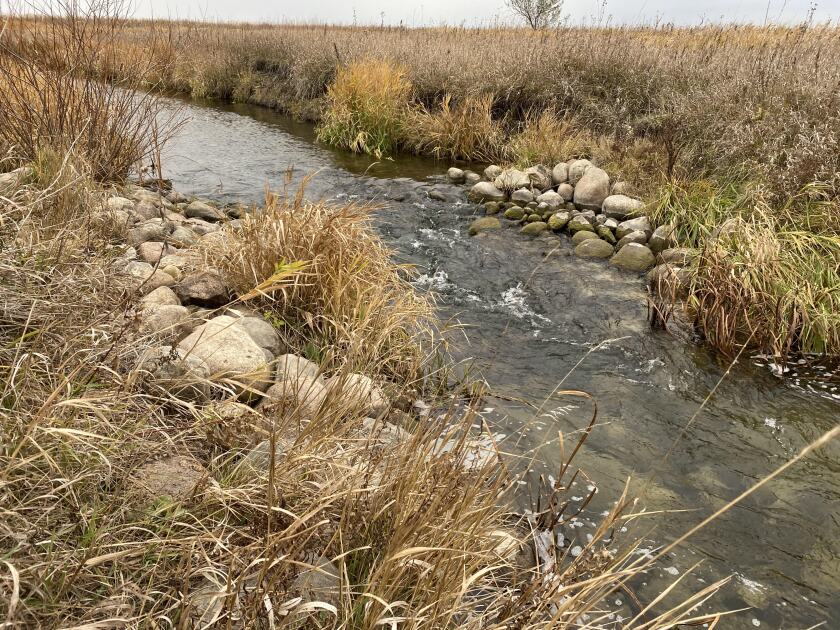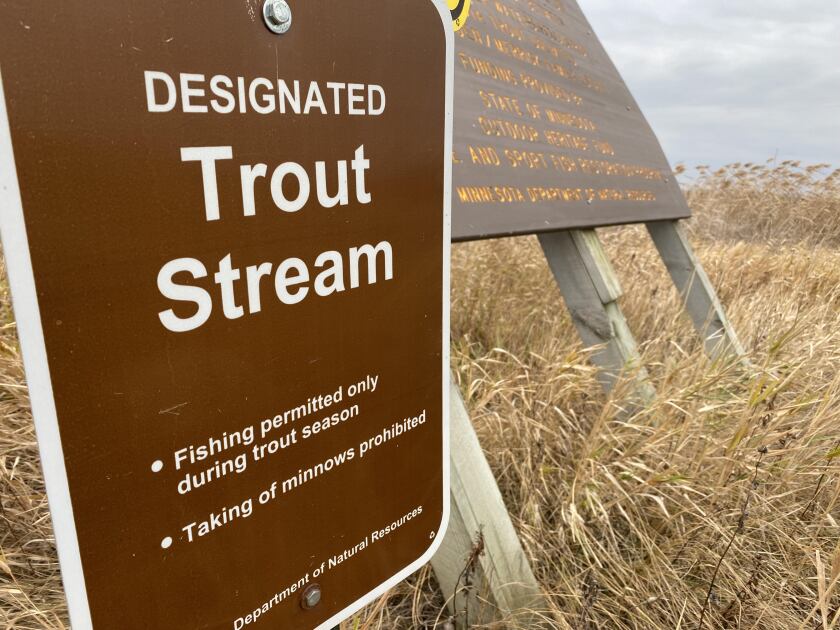WILKIN COUNTY, Minn. — The news was mostly bad again when the Minnesota Pollution Control Agency released its most recent list of the state's impaired waters. More than 300 lakes, rivers and streams were added to the list, which defines waters as too polluted to meet federal standards.
That brings Minnesota's impaired list to about 3,000 bodies of water, with more than 6,000 specific impairments like heavy sediment, algae, bacteria, sulfate, mercury and other chemicals. Much of the state's water pollution comes from runoff in agricultural regions, but there are many sources.
ADVERTISEMENT
Among the gloom, though, there is a glimmer or two. You can see one a few miles south of Barnesville among the thousands of acres of intensively farmed Red River Valley soil.
Along Wilkin County Highway 30, just east of Minnesota Highway 9, is the Lawndale Creek Aquatic Management Area. It is marked by signs, including one that reads "Designated Trout Stream."
Yes, it is true. Far from the mountains of Montana or even the wooded bluffs of southeast Minnesota is a meandering coldwater stream that holds brook trout, just as it did more than a century ago before the area was plowed and ditched.
"It isn't by any means your typical brook trout stream like you might see on TV," said Jim Wolters, the Minnesota Department of Natural Resources area fisheries supervisor based in Fergus Falls. "But it does provide an opportunity out here on the prairie."
Lawndale Creek is one piece in a puzzle that's allowed the MPCA to remove the south branch of the Buffalo River from the impaired waters designation, one of 31 such water bodies deemed improved enough to warrant de-listing this year.
It is a nugget of good news buried among the pile of degraded waterways released by the MPCA.
"When you reduce the erosion going into the streams, when you reduce the runoff, you can see increases in water clarity quite quickly," said Peter Tester, deputy commissioner of the MPCA.
ADVERTISEMENT
The improvement in the south branch of the Buffalo was a long time coming and involved many local and state agencies, most notably the Buffalo-Red River Watershed District. Projects included expanding buffer strips along the Buffalo, modifying ditches and restoring wetlands
The DNR implemented a number of projects using state money from the Outdoor Heritage Fund.
Most impressive was the restoration of Lawndale Creek, an idea spawned in the 1990s and finally completed in 2010, helping reduce the sediment dumped into Deer Horn Creek which then goes into the south branch of the Buffalo River.

The Buffalo has long had sediment problems, with untold tons of soil washing into the river since the region was plowed and ditched more than a century ago.
The history of Lawndale Creek tells the tale.
ADVERTISEMENT
Once a natural meandering brook that originated at a bubbling spring in the current Rothsay Wildlife Management Area, Lawndale Creek was degraded and drained when the state began ditching the area in the late 1800s. Later county ditches exacerbated Lawndale Creek's problems.
"By the time we began to work on restoring Lawndale Creek, the original channel had filled in with soil and debris. There was nothing left," said Luther Aadland, a DNR river ecologist from Fergus Falls.
So Aadland and the DNR constructed a meandering creek that wound about 3.5 miles. They built rock riffles, dug deep holes and planted grass that would overhang stream banks. It was all in the name of creating trout habitat.
The brook trout that historically inhabited Lawndale Creek had survived in limited numbers in the ditches. Once the water was diverted from ditches to the new creek, the trout returned and spawned. The DNR supplemented those numbers with stocking, although it hasn't done so since 2016. The agency hopes to resume stocking in 2023, Wolters said.
"There are some nice trout in there and we count 30 different species of fish in Lawndale Creek, as well as native mussels that have colonized. That's a vast improvement over what was happening in the ditches," Aadland said. "It's kind of been a laboratory for us. We do a lot of restoration work and this is one where we can look and have survey data to guide us."
Lawndale Creek has become a popular trout fishery for some anglers, but the project also benefited from the hydrology of the area. Aadland said the restored creek, adjacent wetlands and floodplain have significantly reduced peak flows in times of high water. Water clarity has increased from 16 centimeters to 1 meter.
ADVERTISEMENT

Erik Jones of Fargo's Houston Engineering, who worked on the restoration, said the Lawndale Creek project combined with ditch repairs have reduced sediment runoff into the Buffalo River by "thousands of tons."
It is a small victory. But given the deluge of bad news when it comes to water quality in Minnesota, any victory counts.
"The more we keep soil on the land, the less it gets into the water and carries something else with it," said the MPCA's Miranda Nichols, who coordinates the impaired waters list. "Improvement takes time. If we stop erosion and stop things from getting into the water it's going to take time for the fish and the bugs to bounce back. While we are seeing improvements, it's slow going and we hope it speeds up."










